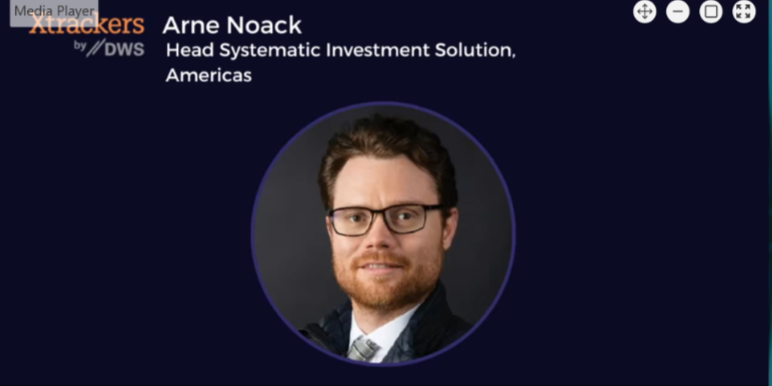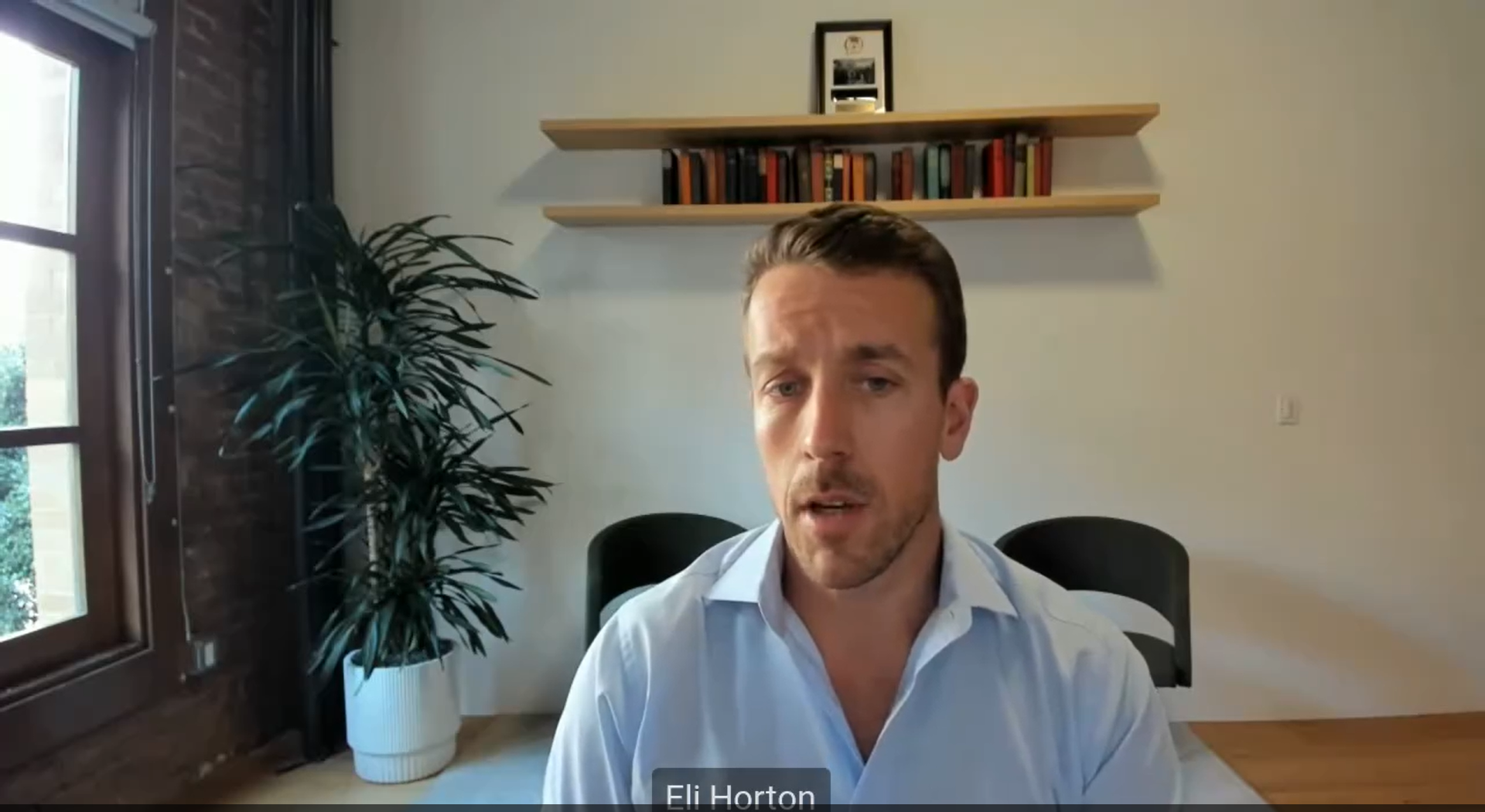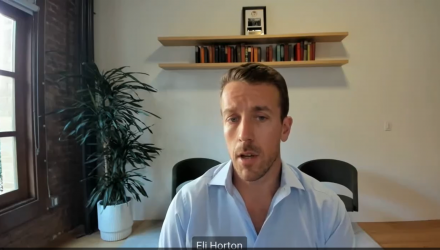Thematic ETFs have come a long way since they made their full debut in the ETF ecosystem. Thematics, which apply a slew of different views to the equity landscape, come in all shapes, sizes, and flavors. Thanks to ETFs’ tax advantages, transparency, and flexibility, they’ve emerged as an important player in the world of ETFs. Understanding thematic ETF trends, then, becomes a key part of an advisor’s preparation for a new year in 2024.
VettaFi’s Head of Research, Todd Rosenbluth, moderated a panel discussion on the topic Thursday at VettaFi’s Equity Symposium. The panel, “Thematic ETFs: Examining Investment Trends as We Approach 2024,” included Xtrackers by DWS Head of Systematic Investment Solutions, Americas Arne Noack and Engine No.1 ETF Portfolio Manager Eli Horton.
The trio asked viewers how much their average client portfolio allocates to thematic ETFs. The results: 42% of respondents said they had 1%-5% in that category. And 15% indicated they had 6%-10%. They also discussed the jump in the number of thematic ETFs, rising from about 40 in 2018 to over 280 in 2023, per GlobalX data.
How Engine No. 1 and Xtrackers See Thematic ETF Trends
See more: “How Thematic ETFs Differ From Sector Funds”

For Noack, thematic ETFs stand out from sector ETFs. Thematics can invest across different sectors that follow their themes. But sector ETFs must stick to classification schemes like the GICS, for example.
“Thematic ETFs look across the board at revenue generation and value chain generation,” he said, pointing to Xtrackers’ cybersecurity ETF, the Xtrackers Cybersecurity Select Equity ETF (PSWD). “It can be very additive to traditional sector investing.”
Thematic investments can often be more tactical, too, Noack noted. At Xtrackers, thematic ETFs tend to be pretty concentrated, he said, which means they can exhibit more volatility than more traditional market exposures.
“Because these are concentrated, they tend to be used for expressing relatively strong convictions,” Noack explained. “If you wanted to express a conviction that semiconductors are something quite critical to the future growth of the United States or the global economy and you want to participate in that, you can take a very specific position in that theme through the relevant ETFs that are out there in the market.”
Digging Into Thematic Perspectives

Horton shared that Engine No.1 invests behind massive systems change through its two ETFs. It considers two big ideas: rehoning the supply chain, and the global adaptation to climate change and away from fossil fuels.
The supply chain has had to adapt to the U.S.-China trade war as well as the COVID-19 pandemic, with U.S. firms trying to re-localize portions of their chains to the U.S. The global energy and sustainability transition, too, not only relies on renewable tech and electric vehicle companies, but affects the way the firm looks at how agricultural firms might have to adapt and use new technology in their work.
“Where some folks might think about us as a sector, we don’t. You’ll notice we own a lot of old-economy businesses,” Horton said. “We tend to look at these businesses as the winners of these themes. The markets ignored a lot of old-economy companies for the past 15 years. We see a future that’s quite bright for them, and that’s a very nice setup for a sector investor.”
Thematic ETFs on VettaFi’s Platforms
Thematic ETF trends analysis on VettaFi platforms showed a big jump in renewable energy over the last few weeks, while environment-focused strategies have also seen an uptick of digital interest. That speaks to the U.S. government investment in renewable energy technology, for example, which has boosted the space overall.
`Engine No.1 offers two strategies that reflect its thematic ETF trends to watch. The firm offers the Engine No.1. Transform Supply Chain ETF (SUPP) as well as the Engine No.1 Transform Climate ETF (NETZ). Engine No.1 looks at the businesses involved in changing those systems, like energy transition-focused firm Schneider Electric (SBGSY). Engine No.1’s thematic ETFs look at a multidecade time frame, Horton also noted.
“We look out five to 10 years to see how a business will evolve, how its competitive advantage will evolve, what its true potential is,” he added. “I think that is somewhat unique in this market.”
Investing in Thematic ETF Trends
SUPP actively invests in high-conviction U.S. equities in areas like automation, transportation, and logistics. The fund generally holds a narrow number of stocks across market-cap sizes that meet its fundamental analysis. NETZ actively invests in firms driving and benefiting from the energy transition via a proprietary screen and a bottom-up firm assessment. It does not use sustainability rankings to identify firms. Both charge 75 basis points (bps), with NETZ standing out in returns with 10.9% YTD.
Xtrackers’ ETFs in the thematic area include the Xtrackers U.S. Green Infrastructure Select Equity ETF (UPGR), the Xtrackers Semiconductor Select Equity ETF (CHPS), and the Xtrackers Cybersecurity Select Equity ETF (PSWD).
UPGR tracks an equal-weighted index of U.S. firms in green energy and sustainable infrastructure that meet size, liquidity, and ESG criteria requirements. CHPS tracks a market-weighted index of semiconductor firms that meet size and liquidity requirements, excluding firms in China, Egypt, India, Pakistan, and Russia. Finally, PSWD tracks a market-cap-weighted index of cybersecurity firms that meet ESG, size, and liquidity criteria excluding firms from the above nations.
UPGR charges 35 bps, CHPS charges 15 bps, and PSWD charges 20 bps, with PSWD the performance standout, returning 6.2% over the last month. For more on thematic ETF trends, keep an eye on more coverage from VettaFi’s Equity Symposium.
For more news, information, and analysis, visit the Equity ETF Channel.


